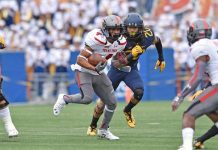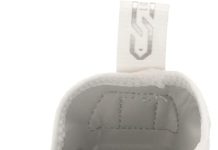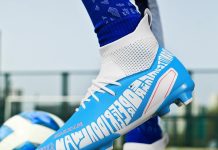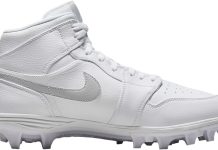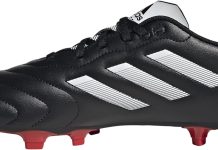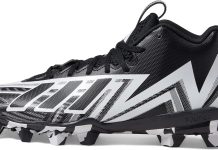Regarding football, the right pair of cleats can make all the difference on the field. But with so many different types available, it’s easy to get overwhelmed and wonder if any cleats will do. We’re here to tell you that not all cleats are created equal.
In this article, we’ll examine whether you can wear any cleats for football and why investing in the right pair can enhance your performance and keep you at the top of your game.
Types of Cleats for Football
When it comes to choosing the right cleats for football, there are several different options to consider. Each type of cleat is designed with specific features to optimize performance and safety on different playing surfaces. This article will explore various available cleats, including firm ground cleats, soft ground cleats, artificial turf cleats, indoor cleats, and training cleats. We will also discuss important factors when choosing cleats, such as playing surface, weather conditions, position, and personal preference.
Firm Ground Cleats
Review contents
Description
Firm ground cleats, as the name suggests, are specifically designed for playing on natural grass and firm playing surfaces. These cleats feature molded studs that provide excellent traction and stability. The stud configuration typically combines conical and bladed studs, allowing quick acceleration, sharp turns, and optimal grip on dry and firm surfaces.
Key Features
The key features of firm ground cleats include the molded stud configuration, designed to provide stability and traction on firm ground. Additionally, these cleats usually have a lightweight design that promotes agility and speed. The upper material is often synthetic or leather, offering durability and comfort.
When to Use
Firm ground cleats are ideal for use on natural grass fields that are dry or moderately wet. When playing on firm ground, these cleats provide superior traction, allowing players to confidently make explosive movements, cuts, and changes in direction. It is important to note that firm ground cleats are unsuitable for wet or muddy conditions, as the studs may not penetrate the surface effectively.
Soft Ground Cleats
Description
Soft ground cleats, or screw-in or detachable cleats, are designed for wet, muddy, or soft terrain. These cleats feature detachable metal studs that can be screwed into the shoe’s sole. The length and shape of the studs can be adjusted to provide maximum traction and stability in different field conditions.
Key Features
The critical feature of soft ground cleats is their ability to adapt to varying field conditions. The metal studs can be easily replaced or adjusted, allowing players to customize their traction based on the level of softness in the ground. These cleats often have a more robust construction and offer enhanced ankle support to help players maintain stability on uneven surfaces.
When to Use
Soft ground cleats are best suited for playing on wet, muddy, or slippery fields. The metal studs penetrate the soft ground, providing excellent grip and preventing players from slipping. These cleats are commonly used during rainy seasons or in areas with heavy rainfall. However, removing or replacing the metal studs when playing on firm ground is essential, as they can damage the playing surface.
Artificial Turf Cleats
Description
Artificial turf cleats are specifically designed for playing on synthetic turf surfaces. These cleats feature shorter rubber or plastic studs evenly distributed across the sole, providing optimal traction without damaging the turf. The stud pattern for artificial turf cleats is typically uniform to ensure stability and prevent the studs from getting caught in the turf fibers.
Key Features
The key feature of artificial turf cleats is the shorter and more numerous studs. This stud configuration allows for proper traction and grip on artificial turf, which has a firmer and less forgiving surface than natural grass. These cleats are also lightweight and designed to promote agility and prevent excessive strain on the legs and joints.
When to Use
Artificial turf cleats are specifically designed for playing on synthetic turf fields. When playing on artificial turf, wearing cleats specifically designed for this surface is essential to ensure optimal performance and minimize the risk of injury. Using other cleats on artificial turf can cause excessive wear and tear on the playing surface and may not provide adequate traction.
Indoor Cleats
Description
Indoor cleats, or indoor soccer shoes, are designed for playing in indoor soccer or futsal facilities. These cleats feature a low-profile, flat outsole with small rubber studs or patterns that provide excellent grip on indoor surfaces such as hardwood or artificial turf. The outsole is usually non-marking to prevent scuffing or damaging the indoor playing surface.
Key Features
The critical feature of indoor cleats is the flat outsole with small rubber studs or patterns. This design allows for better traction and agility on indoor surfaces, which are often smoother and more slippery than outdoor fields. Indoor cleats are also lightweight and offer enhanced flexibility to support quick movements and precise ball control.
When to Use
Indoor cleats are specifically designed for playing indoor soccer or futsal. These cleats should not be used for outdoor play or on traditional grass fields, as the flat outsole does not provide adequate traction on these surfaces. When playing indoor soccer or futsal, it is essential to wear appropriate indoor cleats to ensure optimal performance and safety.
Training Cleats
Description
Training cleats, or turf shoes or trainers, are versatile footwear designed for training sessions and casual play on various surfaces. These cleats feature a durable outsole with small rubber studs or patterns that provide adequate traction on multiple playing surfaces, including natural grass, artificial turf, or indoor courts.
Key Features
The critical feature of training cleats is their versatility. These cleats are designed to provide adequate traction on different playing surfaces, allowing players to transition seamlessly from one surface to another during training sessions or casual play. Training cleats also offer comfort and stability, with cushioning and ankle support to prevent injuries during high-intensity training sessions.
When to Use
Training cleats suit various training activities and casual play on various surfaces. Training cleats provide traction and support when practicing on natural grass, artificial turf, or indoor courts. However, for competitive matches or games on specific surfaces, it is recommended to use cleats specifically designed for those surfaces for optimal performance.
Considerations When Choosing Cleats
When choosing cleats for football, there are several important considerations to remember. These factors can significantly impact your performance and comfort on the field, so it is essential to choose the right cleats based on your specific needs.
Playing Surface
Consider the type of playing surface you will be primarily playing on. As discussed earlier, different cleats are designed for specific playing surfaces, such as firm ground, soft ground, artificial turf, or indoor courts. Choosing the appropriate cleats for the playing surface will ensure optimal traction and performance.
Weather Conditions
Weather conditions, particularly the amount of rain or moisture on the field, can significantly affect your choice of cleats. If you often play in wet or muddy conditions, soft ground cleats with detachable studs may be more suitable. On the other hand, if you typically play in dry or firm conditions, firm ground cleats would be a better option.
Playing Position
Your playing position can also influence the type of cleats you should choose. For example, forwards and wingers who rely on quick bursts of speed and sharp turns may benefit from cleats with a more aggressive stud configuration. Midfielders and defenders, who require stability and control, may prefer cleats with a balanced stud pattern. Goalkeepers may opt for lightweight cleats with a focus on comfort and agility.
Personal Preference
Lastly, personal preference plays a significant role in choosing cleats. Some players may prefer a particular brand, while others prioritize certain features, such as comfort or durability. Trying on different cleats and considering factors such as fit, cushioning, and overall feel can help determine the best choice based on personal preference.
Safety and Performance
Safety and performance should always be prioritized when it comes to football cleats. The right cleats can enhance your performance and reduce the risk of injuries. Here are some key factors to consider in terms of safety and performance when selecting cleats:
Ankle Support
Cleats with proper ankle support can help prevent ankle injuries, especially during quick changes in direction or pivoting movements. Look for cleats that provide a secure fit around the ankle and offer stability and protection.
Traction
Traction is crucial for optimal performance on the field. Cleats with the appropriate stud configuration for the playing surface can provide better grip, preventing slips and falls. Ensure that the studs provide adequate traction without causing excessive friction or discomfort.
Comfort
Comfort is essential for extended periods of play. Look for cleats that offer cushioning, a snug fit, and breathable materials to enhance comfort and reduce the risk of blisters or discomfort.
Durability
Cleats should be able to withstand the rigors of football play. Look for cleats made from high-quality materials that can withstand the demands of the game and provide long-lasting durability.
Regulations and Guidelines
In addition to considering the type of cleats for football, it is essential to familiarize yourself with any specific regulations and guidelines set forth by leagues and associations. Different leagues or associations may have specific rules regarding the type of cleats allowed, stud length, or field requirements. It is crucial to adhere to these regulations to ensure fairness and prevent any potential penalties or disqualifications.
League and Association Rules
Different leagues and associations may have varying rules regarding the use of cleats. Some may permit particular cleats, while others may have specific restrictions. It is essential to consult the rules and regulations of your respective league or association to ensure compliance.
Specific Field Requirements
Certain fields may have specific requirements or restrictions when it comes to cleats. Some fields may prohibit specific cleats to prevent damage, while others require specific stud lengths or materials. Check with the field owners or managers to ensure your cleats meet the requirements.
In conclusion, choosing the right cleats for football is essential for both performance and safety. Understanding the different types of available cleats and considering factors such as playing surface, weather conditions, playing position, and personal preference can help you make an informed decision.
Prioritizing safety features, such as ankle support and traction, along with considering comfort and durability, will allow you to enjoy the game to the fullest.
And remember, always comply with any regulations or guidelines set forth by leagues and associations to ensure fair play and avoid penalties. So lace up those cleats and get ready to dominate the field!




